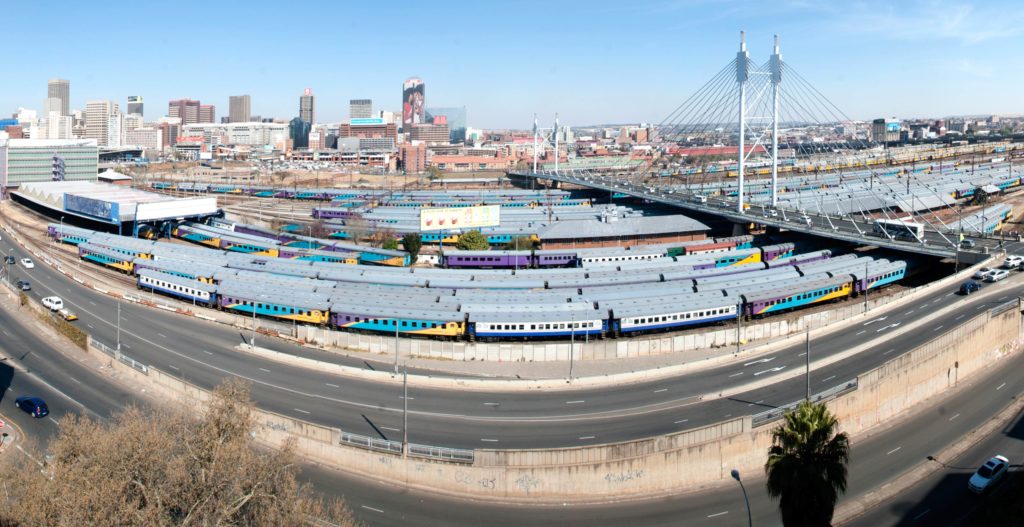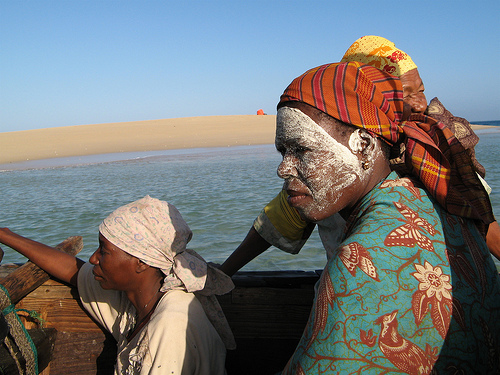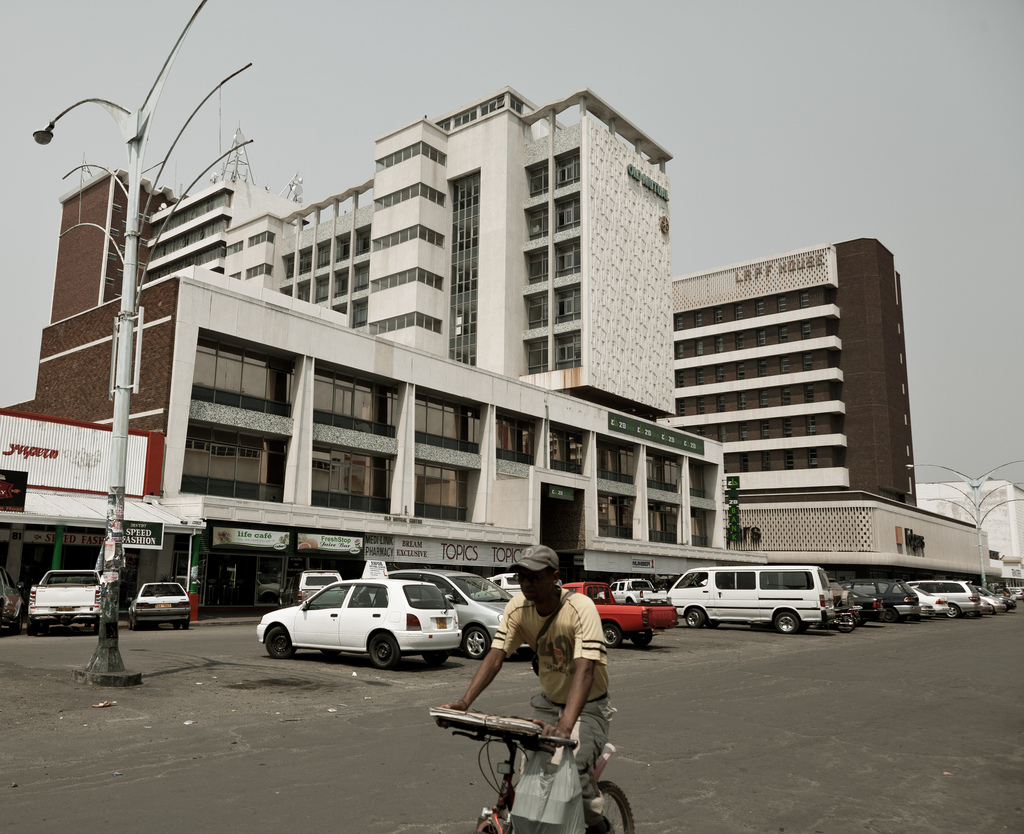The Mail & Guardian has obtained footage that shows unemployed Zimbabweans turning to illegal gold mining in a desperate bid to make money. This dangerous practice has resulted in many deaths.


The Mail & Guardian has obtained footage that shows unemployed Zimbabweans turning to illegal gold mining in a desperate bid to make money. This dangerous practice has resulted in many deaths.

I spent two years at Wits University without ever venturing out into Braamfontein. Shameful, I know. Back then, in 2009, I referred to it as ‘town’. I didn’t differentiate between this place and the undesirable stories I’d heard of Hillbrow. I was a sheltered, suburban South African teen with a penchant for pop music who never walked more than 1km from her home. I had no idea about Braamfontein’s vibrant history as a student destination, packed with coffee shops and eclectic students, or the time when the revolving restaurant still was a restaurant. Basically, I thought Braamies was dodgy so I avoided exploring it.
That changed in 2011 when I got a job off campus at University Corner. Then my access to the ‘safe haven’ of the Matrix (the university’s student mall) was cut off. It was a 20-minute walk plus a ten-minute wait to get overpriced and average food in town. I had to venture down Jorissen Street – and now I don’t regret it.
Before the Neighbourgoods Market (originally a parking garage, now a popular Saturday hangout to get homemade breakfasts and vintage clothes from), before the Puma Social Club (Jozi’s new ‘it’ venue) and Velo cafe, there was the McDonald’s on Jorissen Street. I’d step out of my office and practically run to McDonald’s on my first few trips there, hoping to get back in one piece. Before this I’d never been in the thick of the CBD at lunch time. The first obvious thing I noticed was that it’s dazzlingly cosmopolitan. Students scattered everywhere, school boys cat-calling me, plenty of ‘suits’ and even a McLaren parked on the street.

I soon realised that I’d missed out on the feel of living in a city. It’s not the same as living in the suburbs – it’s more alive, more electric, more human, here. Despite my reservations about the CBD, I knew that crime is rife in the suburbs too, so in retrospect I don’t really know what I was so afraid of. We live in Africa, yet we spend our time in traffic jams of 4x4s and tree-lined streets of The Parks, a group of upper-middle class suburbs scattered towards Sandton. I’ve always thought I lived in a city but this – ‘downtown’ Jozi – is the city.
There’s a huge inner-city revival going on in Braamfontein, a part of the CBD that’s home to more students than you can count. South Point , a property investment company, has taken over and revamped many of the buildings into chic but cheap student accommodation, and scattered bars around their Lamunu Hotel (which warrants a visit).
Over the past few years, Braamfontein has been transformed into a haven for hipsters. You can enjoy a great cup of well-priced coffee while enjoying the art on display at Velo, then visit the Wits Hospice store which is nothing like a charity shop, and, if you’re a photography lover, pop into the Lomography Embassy at 70 Juta. It’s hipster’s paradise in the inner city, and a coffee in my hand and fashion on tap is my idea of heaven.

The nightlife in Braamies is also steadily growing. When acclaimed South African rock band Shadowclub made the line-up at the Puma Social Club a few weeks ago, the queue to get in was nearly a block long. Hundreds of 20-somethings waited for hours to be entertained (and to Instagram their experience).
To me, Braamfontein is where the charm is. It’s a place where anyone, even yuppies clutching onto their handbags, can feel at home. The next time you’re driving through the city, park your car, get out, and walk. Take in the cacophony of traffic, the busy sidewalks, the mix of people and shops . You’ll get, like I did, that this is an African city.
Zaahirah Bhamjee runs the women’s interest blog completedisbelief.co.za. She’s based in Johannesurg and spends her days juggling work and blogging. Connect with her on Twitter.

A trio of friends from Soweto, Vuyo Mpantsha and twins Justice and Innocent Mukheli, started a photo/fashion blog to document “South Africa as they see it”. They shoot in different areas around Johannesburg with the aim of recapturing moments of their childhood. Visit iseeadifferentyou.tumblr.com to see high fashion meet history.

In the northern coastal region and islands of Mozambique, it’s common to come across women with faces covered with a natural white mask, called mussiro or n’siro. The purpose of the mask seems to have evolved over time. Nowadays it tends to be considered more as a means of beautifying the skin but, according to oral accounts, mussiro masks used to carry other subliminal messages related to the civil status of women.
Matope Jose, writing for the local Mozambican blog Mozmaníacos, sheds some light on its historical tradition: “The Nampula province is traditionally known as the land of muthiana orera (simply beautiful ladies). The women from that region of the country have a technique that is particular to them: they treat the skin from an early age, using a sought-after forest species called mussiro, a plant that by law must be preserved and multiplied, and that is used more generally by communities to cure various diseases, as well as for decorative purposes.”

In a video by Julio Silva, women from Angoche explain how the tradition has been passed down to today’s generation from their grandparents, and they show how the cream is extracted from the Olax dissitiflora plant using a stone and some water:
“This is the plant that we, as mussiros, use on our faces. It is what you can see on my face, that’s the plant.
I am Fátima, from Angoche. This mussiro, our grandparents first used it to show when a girl was a virgin. Then she would enter a house. They painted themselves with this mussiro to become white, until a boy came along who they fell in love with and married; only afterwards did they stop using the mussiro. Only afterwards, they use the mussiro like this, when someone is outside, in order to be white, to make their faces beautiful. This is mussiro. The plant is in the forest. While we usually go and meet our husbands, the great grandparents go and cut it and start selling it.”
According to Baia magazine, although mussiro was traditionally used by virgins or by women whose husbands were away, its usage has changed over time: “Nowadays, this paste is widely used and has been “liberalised” for all women, from the north to south of the country, so that it can be used not only by the Makwa or Makonde women, but also by the Manhungue, Machuabo, Maronga, Machope, Matswa, etc. It is already considered to be a beauty treatment used by all women especially concerned with African feminine beauty. Some designers are expecting their models to use this “Afro paste” on major catwalks, as they do at Mozambique Fashion Week.”
This post by Sara Moreira was originally published on Global Voices Online.

It’s been four years since I last lived in Zimbabwe, four long years during which I strolled along the Mediterranean beaches in Algiers, ate Middle Eastern food, danced to Rai music and, like the rest of the world, observed the country of my birth from the other side of the looking glass. We are a country not exactly famous for positive headlines and I admit that I too have been sucked into negativity. Perhaps that explains the little pang of regret I feel as the bus crosses the Limpopo river and approaches the Beitbridge border post.
The differences are almost immediate when you enter Zimbabwean territory. The lights, for one, seem dimmer this side, the buildings older, the flag that stands at the entrance of the border post seems to be reminding itself of better days when its edges were less tattered. For a moment I wonder why I am going back when it seems so many are ignoring crocodiles, electric fences and the oh-so-insignificant fact that they don’t have passports to go in the opposite direction. But it is time: the bus stops and we descend to begin the appeasement of the bureaucratic god that lies in wait at every border post.
It hits me almost as soon as I step out into the crisp morning air. Perhaps it’s the freshness of the air, the excited buzz of passengers as they contemplate that their journey is almost at its end. I don’t know what it is but almost at once I feel glad to have arrived back home. It’s an amazing feeling to walk into a passport office and have the crest on your passport match the one on the Ministry of Home Affairs logo, to not have to explain where you are going and how long you are going to stay there. It’s an even greater feeling to hear the hawkers selling Buddie airtime, their voices insistent, belying the fact that they’ve probably been up all night.
The bureaucratic god is appeased with a cursory glance at my passport. He bangs a stamp on it and we board the bus again, waiting to depart. After a five-hour delay at customs, which I am assured is not that bad a wait, we are on our way. The people around me have become livelier. The relative calm is punctuated by occasional snoring. Some men behind me are talking about a man in Makokoba who has taken his mother for his lover. The woman next to me shows me photos of her children. She is working so that she can buy a house for her family. She likes living in South Africa, she says, but she misses home terribly. She asks me what I do. I lie and say I am a student at Wits. I have discovered that is the best way to avoid barrages of questions about the Middle East, Islam and why on earth I would go and study there in the first place. (When I was offered a scholarship to study French and computer science there four years ago, my main thought back then had been that the journey would involve a plane.)
Five long hours later the bus finally arrives in the former capital of the Ndebele Kingdom, a city built by a king fleeing the murderous wrath of another king and named after the slaughter that occurred there so many decades before I was an idea in God’s mind. None of that is evident as I look out the window. All I see are scenes that had once been part of my every day, scenes I had taken for granted as I went on my way to school or to church. The tree-lined avenues of Bulawayo that will come October burst into a purple glory matched by few other cities; the vendors selling airtime at the robots; the kombis dodging through traffic, filled almost to bursting point with people on their way to work. Life had continued while I was away but for the most part the city is the same as it was when I left it.

And it seems the headlines have not touched Bulawayo’s heart; forget them all. There is nothing like being where you know you will always belong. There is nothing like being able to speak in your mother tongue without having to resort to English-accented French or stuttering Arabic. Even my English can return to its default setting – here a traffic light is a robot, any soft drink is Coca-Cola, all toothpastes are Colgate and names like Priority are as commonplace as Matthew and Jacob. Here I can walk down the street with absolutely no fear of being stopped to show my ID, a practice that annoyed me in Algeria as much as it did in South Africa. And even when the Zimbabwe Electricity Supply Authority demonstrates its loose definition of the word ‘supply’, it can be a calming thing to sit in the candle light and talk about anything and everything under the sun.
And some things never change. The windis (kombi conductors) still hang half their bodies out of their vehicles; they stand at taxi ranks screaming at the top of their lungs for passengers. The old ladies still sit in the flea markets waiting to convince customers that their vegetables are the freshest and the cheapest. Youth still loiter on the streets during the day, dressed to the nines in the latest offerings of the Jo’burg and New York fashion world.
I come to realise that people have lived out their lives through a water supply crisis, an infamous economic collapse and a notorious Government of National Unity. The sun has risen and set on the townships and suburbs of Bulawayo all these years and people have gone about their days with smiles still reaching the sides of their faces, enduring the harsh, dark realities with bittersweet stoicism.
From afar the news headlines may have been accurate but they never told the full story. I realise that you can never be right whilst standing on the other side of the looking glass; you have to step through as I did and realise, as I did, that there is no place like home.
Bongani Ncube-Zikhali is a writer, poet, youth activist and a fan of Dr Sheldon Cooper. He is passionate about the written word and has been published in two anthologies by Amabooks. In 2010 he was awarded the Dr Yvonne Vera Award by the Zimbabwean Intwasa Arts Festival. He currently lives in Paris where he is studying computer science.